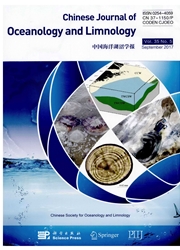

 中文摘要:
中文摘要:
拖网是在中国渔业的一个主要钓鱼齿轮,捕获大鱼并且让全体的小的。然而,拖网的长期的使用将导致鱼股票的 phenotypic 特点的变化,例如更小的 size-at-age 和更早的 age-at-maturation。在这研究,我们与拖网钓鱼和人口的尺寸特征模仿了一张鱼人口由身体尺寸生产后代和生活的一代一年,利用模仿的鱼人口的使用的拖网,和捕获的个人。我们在选择参数上评估了变化的影响,例如在 50% 保留的选择范围和长度。在捞压力下面,我们指定了选择参数,并且决定在 50% 保留的更小的选择率和更大的长度向小型化与一个增加的趋势被联系。
 英文摘要:
英文摘要:
Trawl is a main fishing gear in Chinese fishery, capturing large fish and letting small ones at large. However, long-term use of trawl would result in changes of phenotypic traits of the fish stocks, such as smaller size-at-age and earlier age-at-maturation. In this study, we simulated a fish population with size characteristics of trawl fishing and the population produces one generation of offspring and lives for one year, used trawl to exploit the simulated fish population, and captured individuals by body size. We evaluated the impact of the changes on selectivity parameters, such as selective range and the length at 50% retention. Under fishing pressure, we specified the selectivity parameters, and determined that smaller selection rates and greater length at 50% retention were associated with an increased tendency towards miniaturization.
 同期刊论文项目
同期刊论文项目
 同项目期刊论文
同项目期刊论文
 期刊信息
期刊信息
